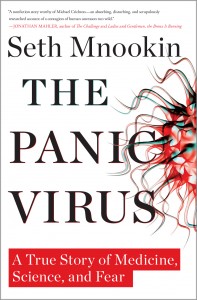
On February 28, 1998, the revered British medical journal The Lancet published a brief paper by then-high profile but controversial gastroenterologist Andrew Wakefield that claimed to have linked the MMR (measles, mumps and rubella) vaccine with regressive autism and inflammation of the colon in a small case number of children. A subsequent paper published four years later claimed to have isolated the strain of attenuated measles virus used in the MMR vaccine in the colons of autistic children through a polymerase chain reaction (PCR amplification). The effect on vaccination rates in the UK was immediate, with MMR vaccinations reaching a record low in 2003/2004, and parts of London losing herd immunity with vaccination rates of 62%. 15 American states currently have immunization rates below the recommended 90% threshold. Wakefield was eventually exposed as a scientific fraud and an opportunist trying to cash in on people’s fears with ‘alternative clinics’ and pre-planned a ‘safe’ vaccine of his own before the Lancet paper was ever published. Even the 12 children in his study turned out to have been selectively referred by parents convinced of a link between the MMR vaccine and their children’s autism. The original Lancet paper was retracted and Wakefield was stripped of his medical license. By that point, irreparable damage had been done that may take decades to reverse.
How could a single fraudulent scientific paper, unable to be replicated or validated by the medical community, cause such widespread panic? How could it influence legions of otherwise rational parents to not vaccinate their children against devastating, preventable diseases, at a cost of millions of dollars in treatment and worse yet, unnecessary child fatalities? And why, despite all evidence to the contrary, have people remained adamant in their beliefs that vaccines are responsible for harming otherwise healthy children, whether through autism or other insidious side effects? In his brilliant, timely, meticulously-researched book The Panic Virus, author Seth Mnookin disseminates the aggregate effect of media coverage, echo chamber information exchange, cognitive biases and the desperate anguish of autism parents as fuel for the recent anti-vaccine movement. In doing so, he retraces the triumphs and missteps in the history of vaccines, examines the social impact of rejecting the scientific method in a more broad perspective, and ways that this current utterly preventable public health crisis can be avoided in future scenarios. A review of The Panic Virus, an enthusiastic ScriptPhD.com Editor’s Selection, follows below.
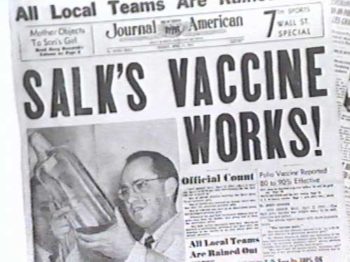
Such fervent controversy over inoculating young children for communicable diseases might have seemed unimaginable to the pre-vaccine generations. It wasn’t long ago, Mnookin chronicles, that death and suffering at the hands of diseases like polio and small pox were the accepted norm. In 18th Century Europe, for example, 400,000 people per year regularly died of small pox, and it caused one third of all cases of blindness. So desperate were people to avoid the illnesses’ ravages, that crude, rudimentary inoculation methods were employed, even at the high risk of death, to achieve life-long immunity. A 1916 polio outbreak in New York City, with fatality rates between 20 and 25 percent, frayed nerves and public health infrastructure to the point of near-anarchy. As the disease waxed and waned in outbreaks throughout the decades that followed, distraught parents had no idea about how to protect their children, who were often far more susceptible to fatality than adults. By the time Jonas Salk’s polio vaccine breakthrough was announced as “safe, effective and potent” on April 12, 1955, pandemonium broke out. “Air raid sirens were set off,” Mnookin writes. “Traffic lights blinked red; churches’ bells rang; grown men and women wept; schoolchildren observed a moment of silence.” Salk’s discovery was hailed as “one of the greatest events in the history of medicine.”
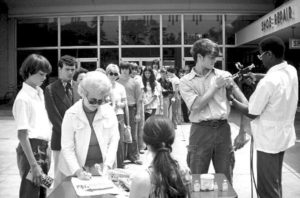
Mnookin doesn’t let scientists off the hook where vaccines are concerned, however, and rightfully so. Starting around World War II, with advances such as the cowpox and polio vaccines, along with the dawning of the Antibiotics Age, eradicating death and suffering from communicable diseases and bacterial infections, a hubris and sense of superiority began to creep into the scientific establishment, with dangerous consequences. Fearing the threat of biological warfare during World War II, a 1941 hastily-constructed US military campaign to vaccinate all US troops against yellow fever resulted in batches contaminated with Hepatitis B, resulting in 300,000 infections and 60 deaths. The first iteration of Salk’s polio vaccine was only 60-90% effective before being perfected and eventually replaced by the more effective Sabin vaccine. Furthermore, dozens of children who had received doses from the first batch of vaccines were paralyzed or killed due to contaminated vaccines that had failed safety tests. In 1976, buoyed by the death of a soldier from a flu virus that bore striking genetic similarity to the 1918 Spanish flu epidemic strain, President Gerald Ford instituted a nation-wide mass vaccination initiative against a “swine flu” epidemic. Unfortunately, although 40 million Americans were vaccinated in three months, 500 developed symptoms of Guillain-Barré syndrome (30 died), seven times higher than would normally be expected as a rare side effect of vaccination. Many people feel that the scars of the 1976 fiasco have incurred a permanent distrust of the medical establishment and have haunted public health influenza immunization efforts to this day.
These black marks on the otherwise miraculous, life-saving history of vaccine development not only instilled a gradual mistrust in public health officials, but laid the groundwork for the incendiary autism-vaccine scandal. The only missing components were a proper context of panic, a snake oil salesman and a compliant media willing to spread his erroneous message.
Enter the autism epidemic and Andrew Wakefield’s hoax. Because this seminal event had such a profound effect on the formation and proliferation of the current anti-vaccine movement, it is chronicled in far greater detail than our introduction above. From precursor incidents that ripened the potential for coercion to the Wakefield’s shoddy methodology and the naive medical community that took him at his word, Mnookin weaves through this case with well-researched scientific facts, interesting interviews and logic. A large chunk of the book is ultimately devoted to the psychology of what the anti-vaccine movement really is: a cognitive bias and a willingness to stay adamant in the belief that vaccines cause harm despite all evidence to the contrary. “If you assume,” he writes, “as I had, that human beings are fundamentally logical creatures, this obsessive preoccupation with a theory that has for all intents and purposes been disproved is hard to fathom. But when it comes to decisions around emotionally charged topics, logic often takes a back seat to a set of unconscious mechanisms that convince us that it is our feelings about a situation and not the facts that represent the truth.”
Given this blog’s objective to cover science and technology in entertainment and media, it would be disingenuous to write about the anti-vaccine movement without recognizing the implicit role played by the media and entertainment industries in exacerbating the polemic. By lending a voice to the anti-vaccine argument, even in a subtle manner or in a journalistic attempt to “be fair to the other side,” over time, an echo chamber of lies turned into an inferno. In 1982, an hour-long NBC documentary called DPT: Vaccine Roulette aired, overemphasizing rare side effects in babies from vaccinations to a nation of alarmed parents and completely undermining their benefits. It was a propaganda piece, but an important hallmark for what would come later. A 2008 episode of the popular ABC hit show Eli Stone irresponsibly aired anti-vaccination propaganda involving a lawyer questioning a pharmaceutical company that manufactures vaccines due to the even then-debunked link to autism. For several recent years, actress and Playboy bunny Jenny McCarthy (who is given an entire chapter by Mnookin) became a tireless advocate against vaccinations, believing that they gave her son autism. She didn’t have any scientific proof for this, but was nevertheless given a platform by everyone from Larry King on CNN to a fawning Oprah Winfrey.

As it turns out, McCarthy’s son never even had autism, but rather a very rare and treatable neurological disorder. In a self-penned editorial for the Chicago Sun-Times, she has officially retroactively denied her anti-vaccine stance, and says she simply wants “more research on their effectiveness.” An extremely sympathetic 2014 eight-page Washington Post magazine article profile of prominent anti-vaccine activist Robert F. Kennedy, Jr. (who believes in the link between vaccines and autism) repeated his talking points numerous times throughout. This, among an endless cycle of interviews and appearances by defiant anti-vaccine proponents, given equal air time side-by-side with frustrated scientists, as if both positions were somehow viable, and worthy of journalistic debate. Once the worm was out of the can, no amount of rational discourse could temper the visceral antipathy that had been created. This is irresponsible, dangerous and flat-out wrong. When the public is confused about an esoteric issue pertaining to science, medicine or technology, influencers in the public eye cannot perpetuate misinformation.
Despite the unanimous medical repudiation of Wakefield’s fraudulent methods and conclusions and the retraction of his Lancet paper, an irreversible and insidious myth had begun permeating, first among the autism community, then spreading to proponents of organic and holistic approaches to health and finally, to mainstream society. In the aftermath of the controversy, epidemiological studies debunking the autism-vaccination “link,” combined with a growing disease crisis, have forced the largest US-based autism advocacy organization to reverse its stance and fully endorse vaccination to a still-divided community. Wakefield remains more defiant than ever, insisting to this day that his research was valid, attempting to sue the British journalism outlet that funded the inquiry into his fraud and peddling holistic treatments for autism as well as his “alternative” vaccine. Sadly, the public health ramifications have nothing short of disastrous, with a dangerous recurrence of several major childhood diseases.
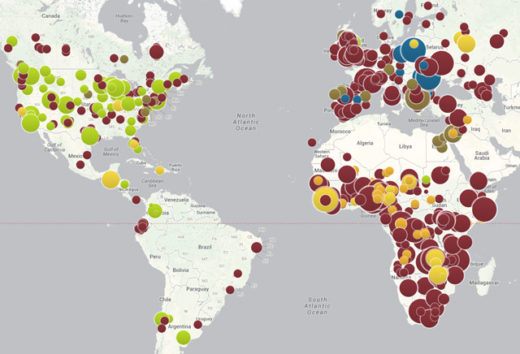
A few examples of the many systemic casualties of the anti-vaccination movement (many occurring just since the publication of Mnookin’s book):
•A summary from the American Medical Association about the nascence of the measles crisis in 2011, when the US saw more measles cases than it had in 15 years
•Immunization rates falling so low that schools in some communities are being forced to terminate personal exemption waivers and, in some cases, legally mandated immunization for public school attendance
•California’s worst whooping cough epidemic in 70 years.
•Most recently, a measles outbreak at Disneyland, resulting in 26 cases spread across four states, after an unvaccinated woman visited the theme park
•Anti-vaccine hysteria has spread to Europe, which has had a measles rise of 348% from 2013 to 2014 (and growing), along with an alarming resurgence of pertussis
The scientific evidence that vaccines work is indisputable, and as the below infographic summarizes, their impact on morbidity from communicable diseases is miraculous. Sadly, now that the anti-vaccine movement has streamlined into the general population, anxious parents are conflicted as to whether vaccinating is the right choice for their children. We must start by going back to the basics of what a vaccine actually is and how it works. Next, we must reiterate the critical importance that maintaining herd immunity above 92-95% plays in protecting not only those too young or immunocompromised to be vaccinated, but even fully vaccinated populations. If all else fails, try emailing skeptical friends and family a clever graphic cartoon that breaks down digestible vaccine facts. Simply put: getting vaccinated is not a personal choice, it’s a selfish and dangerous choice.
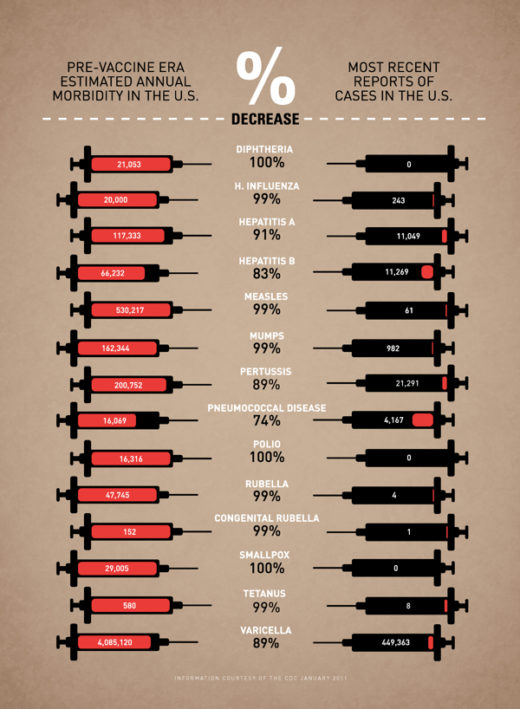
The Panic Virus is first and foremost an incredibly entertaining, well-written narrative of the dawn of an anti-vaccine phenomenon which has reached a critical mass. It is also an important case study and cautionary tale about how we process and disseminate information in the age of the Internet and access to instant information. It is also an indictment on a trigger-happy, ratings-driven, sensationalist media that reports “news” as they interpret it first, and bother to check for facts later. In the case of the anti-vaccine movement of the last few years, the media fueled the fire that Andrew Wakefield started, and once a gaggle of angry, sympathetic parents was released, it was difficult (if-near impossible) to undo the damage. This type of journalism, Mnookin writes, “gives credence to the belief that we can intuit our way through all the various decisions we need to make in our lives and it validates the notion that our feelings are a more reliable barometer of reality than the facts.” Sadly, the autism-vaccine panic movement is not an outlying incident, but rather a disconcerting emblem of a growing anti-science agenda. The UN just released its most dire and alarming report ever issued on man-made climate change impacts, warning that temperature changes and industrial pollution will affect not just the environment, extreme weather events and coastal cities, but even the stability of our global economy itself. Immediate rebuttals from an influential lobbying group tried to undermine the majority of the scientists’ findings. So toxic is the corporate and political resistance to any kind of mitigating action, that some feel we need a technological or political miracle to stave off a certain environmental crisis. At a time when physicists are serious debate on evolution versus creationism and thousands of public schools across the United States use taxpayer funds to teach creationism in the classroom.
Mnookin’s book is an important resource and conversation starter for scientists, researchers and frustrated physicians as they carve out talking points and communication strategies to establish a dialogue with the public at large. When young parents have questions about vaccines (no matter how erroneous or ill-informed), pediatricians should already have materials for engaging in a positive, thoughtful discussion with them. When scientists and researchers encounter anti-science proclivities or subversive efforts to undermine their advocacy for a pressing issue, they should be armed with powerful, articulate communicators — ready and willing to deliberate in the media and convey factual information in an accessible way. When Jenny McCarthy and a gaggle of new-age holistic herbologists were peddling their “mommy instincts” and conspiracy theories against vaccines, far too many scientists and physicians simply thought it was beneath them to even engage in a discussion about something whose certainty and proof of concept was beyond reproach. Now, the newest polling suggests that nothing will change an anti-vaxxer’s mind, not even factual reasoning. Going forward, regardless of the issue at hand, this type of response can never happen again. The cost of complacency or arrogance is nothing short of life or death.
The Panic Virus by Seth Mnookin is currently available on paperback and Kindle wherever books are sold. For further reading on how to deal with the complexities of the anti-vaccine movement aftermath, we suggest the recent book On Immunity: An Inoculation by Northwestern University lecturer Eula Bliss.
*****************
ScriptPhD.com covers science and technology in entertainment, media and advertising. Hire our consulting company for creative content development. Follow us on Twitter and Facebook. Subscribe to our podcast on SoundCloud or iTunes.